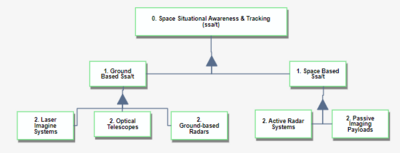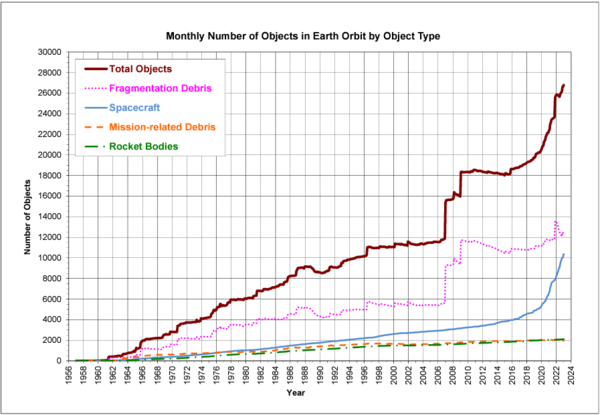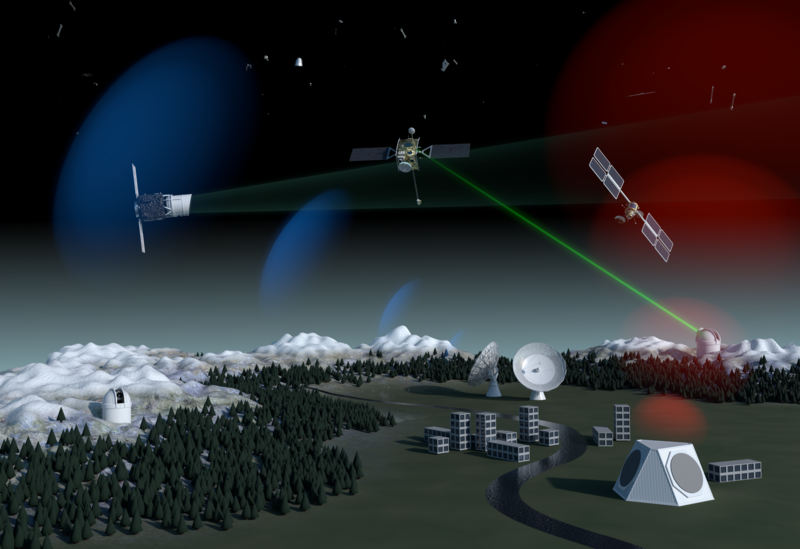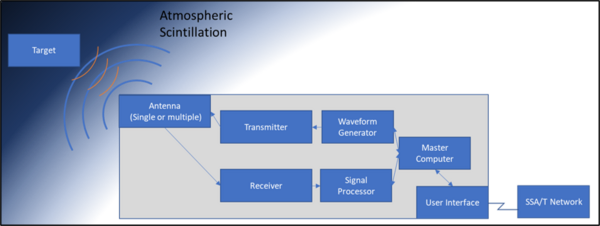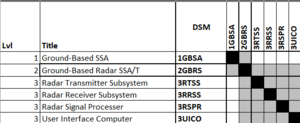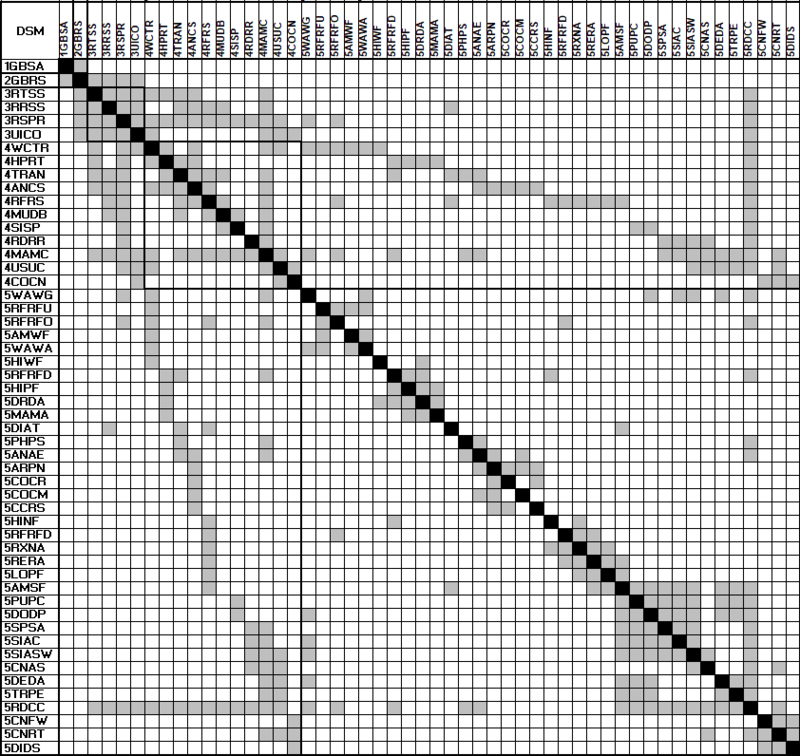Ground Based Radar For Space Situational Awareness
Technology Roadmap Sections and Deliverables
This technology roadmap is identified as:
- 2GREAT - Ground Based Radar For Space Situational Awareness
Or as Ground-based Radar to Enable Awareness and Tracking (GREAT)
Space Situational Awareness and Tracking (SSA/T) is the operational concept to detect, identify, and track Resident Space Objects (RSOs), orbiting around the Earth. The SSA/T enterprise is comprised of ground-based and space-based sensors with a broad customer base. SSA/T originated from the need to track RSOs in orbit to support data analysis and collision avoidance of active satellite vehicles (SVs), inactive SVs, and orbital debris. As of 1 September 2023, the European Space Agency estimates about 8600 functioning SVs, over 1,036,500 objects greater than 1cm, and more than 11,000 tonnes of mass in orbit1.
The figure below illustrates the levels within the SSA/T enterprise.
Ground Based Radar For Space Situational Awareness and the SSA/T Enterprise
Many systems comprise the architecture, each with its own technological challenges, advantages, and disadvantages.
Roadmap Overview
Background Space Situational Awareness and Tracking was initiated in the 1950s to support missile warnings of intercontinental ballistic missiles. The first of these radars was developed to identify and track missiles when they reach the apogee of their suborbital flight and begin their re-entry. In 1955, shortly after the sub-orbital radars began operation, the Soviet Union launched their first satellite, and a new space race began. With the growing concern about the need to track low earth orbit (LEO) satellites, most suborbital missile warning radars began to support the dual purpose of detecting and tracking satellites.
Today, over 26,000 objects over 10 cm are tracked by the United States SSA network, and countless more pieces of debris under 10 cm. This debris poses a risk to satellites in orbit, space stations, launch vehicles, and satellites transit through orbits.
Amount of Orbital Debris by Type, from NASA Quarterly "Orbital Debris" March 2022 Newsletter, Accessed 2 October 2023 https://orbitaldebris.jsc.nasa.gov/quarterly-news/pdfs/ODQNv27i1.pdf
Ground-Based SSA Network
The Ground-based SSA network consists of multiple active and passive sensors. Most prolific within the network are radar systems. A ground-based SSA radar has varying subsystem architectures such as phased arrays, single arrays, monostatic, or bi-static systems. Each radar system varies in frequency and power based on the needs for that radar site. Many SSA systems are networked to support the shared object identification and tracking catalog.
Artist's impression of various SSA systems comprising a full SSA architecture. “Space Surveillance and Tracking - SST Segment.” Accessed October 1, 2023. https://www.esa.int/Safety_Security/Space_Surveillance_and_Tracking_-_SST_Segment.
Ground-Based Radar SSA Broadly speaking, a ground-based radar consists of a radar transmitter and receiver, a master computer, and a user interface. The system emits a high-power waveform and then attempts to identify radar returns from the received noise. This process is not trivial. The system must transmit with enough power to overcome path loss, which reduces the range of a radar by Range4, and Atmospheric Scintillation in both directions. The return signal is often so faint that the main computer must use advanced signal processing and detection algorithms to find the return signal in the noise.
This Roadmap will explore what technology has driven the success of the SSA/T network, how to optimize the system further, and what innovative, potentially disruptive technologies are on the horizon.
Design Structure Matrix (DSM) Allocation
The DSM below provides a NxN mapping of the technologies within the SSA/T Enterprise, as decomposed initially in the SSA/T Enterprise figure above. The DSM describes the relationship between elements within the matrix as a component relationship (green), functional relationship (yellow), physically connected (red), or supporting relationship (grey).
A component relationship is when one element is a component of the other. For example, the Radar Antenna has many components, such as the antenna array and the physical antenna structure.
A functional relationship is when one element does not physically connect to another but fulfills a function together. For example, the Radar Signal Processing System relies on information from the User Interface on the Pulse Generator.
A physical relationship is when one element is physically connected to another. An example is the Joint Space Operations Center's connection to a communication network that is not necessarily physically connected to the ground-based radar system.
Lastly, a supporting relationship is when one element provides support to the other that is not functional or physical. For example, Space-based and Ground-based systems may coordinate to support the orbit determination of a piece of space debris.
Roadmap Model using OPM
Figures of Merit
Alignment with Company Strategic Drivers
Positioning of Company vs. Competition
Technical Model
Financial Model
List of Demonstrator Projects
Key Publications, Presentations and Patents
Technology Strategy Statement
References
[1] European Space Agency, Space Environment Statistics, Accessed 1 October 2023 https://www.esa.int/Space_Safety/Space_Debris/About_space_debris#:~:text=In%20more%20than%2060%20years,10%20cm%20in%20low%2DEarth
